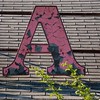I can’t stop rewriting this post because for some reason I keep sounding unprofessional. Writing about my blog consumption turns on my texting slang aggregator. Maybe I con-text-ualize myself differently because I mostly read my friends’ blogs, and I tend to speak in an ultra-casual OMG way with them. (We never say LOL unless we’re being really sarcastic, by the way. LOL is so passé.)
I read blogs socially. I know I should be reading something like the Daily Kos, but I’m usually reading my friends’ blogs, especially “
A Librarian’s Guide to Etiquette.” Online networking like Facebook is great, and I use it almost daily, but keeping up with blogs that publish sporadically can be challenging. RSS-ing my friends gives me the freedom to see what they’re up to when they’re up to it.
Although I’ve had blog followers on my own private blog, and although I know how to insert an RSS feed option into my blogs, I had never actually done it until Thing 4. And, as far as putting all my friends in one place, I had never used Google Reader before. Now I’m discovering, “Hey, look, I can see you all together at once!” Google Reader is like my own little coffee house.
I also learned a lesson the hard way. I thought I’d be cute and put a subscription to one of the gossip websites I read occasionally on my Google Reader. Within milliseconds my aggregator was overfilled with a million posts. I discovered that Google Reader saw my gossip site as a series of individual posts, not one cloud under the name of the site. Oops. Although I stopped my subscription to the gossip feed within minutes, I can’t figure out how to get the headlines out of my inbox! Now I know to seriously evaluate the website in question and decide how it will affect my inbox.
I know this is the “wrong” answer, but, for the short term, I’m using RSS in Google Reader for my friends and for the handful of “23 Things” blogs I’m following. In the long term, I need to evaluate which library sites are of value to me and subscribe to those rather than hunting them down sporadically.
I’m also envisioning a with-it, jargon-filled library blog aimed at clients that includes an RSS feed. I’m teh win cause I no LOLspeak like bebeh kittehs!!1!1!!!













